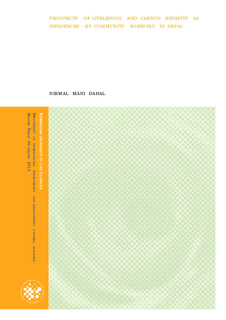| dc.description.abstract | This thesis examines the forest based livelihood strategy of the forest user groups and the prospects and potential benefits of soil carbon sequestration through REDD (Reducing emissions from deforestation and forest degradation) program in two watersheds of Nepal. User groups in the community forests are managing forests for the sustainability and better achievement of livelihood assets. Community-based forest management has also been perceived as a platform for gender equity and empowerment. Along with the social benefits, community forestry has increased the potential of soil carbon sequestration. However, the REDD mechanism is still an international agenda between the countries for implementation. Therefore, our preparedness and position should be adequate for the possible beneficial implementation of REDD in Nepal. On this ground, a study was carried out in Kayarkhola and Ludhikhola watersheds of Chitwan and Gorkha districts of Nepal respectively during October & November 2011. The objectives of this study were to (a) understand the assets of forest based livelihood strategy in the community-based forest management system and (b) assess the prospects of enhancing soil organic carbon stocks in the community forests with potential implication for REDD. Data collections were conducted using questionnaire survey, focus group discussions, laboratory experiments and study of relevant literatures.
The study revealed that both men, women were important elements in the community forestry sector. Notably the women and other disadvantageous groups were being empowered through programs organized by the community forestry users groups such as adult literacy class, trainings in forest inventory, carbon measurements, livestock management and other skills such as tailoring, mason, carpentry, etc. Our findings showed that the crop productivity has increased from the past to present that is production has increased after establishment of community forest. The opportunities of improved livelihood through the identification of social roles, responsibility and other managerial aspect in community forestry appears to empower community and enables the development of institution for better management and governance of resources. The other potential benefits are the prospects of enhancing carbon sequestration.
Our study revealed that forest soil has a high potential to sequester carbon, potential REDD benefits and some MRV(Monitoring, Reporting and Verification) issues related to it. Based on the measurements of required soil parameters we calculated the soil organic carbon (SOC) stock in the community forests and compared with other studies. The comparison showed the similar trend of carbon storage within one-meter soil profile. We also calculated SOC stock within the community forests in watersheds and of other degraded sites. The result showed that well managed site (community forest) had three to four times higher soil carbon stock than degraded site. The estimation of potential carbon gained indicated the potential future benefits of enhancing soil carbon stock through community forests as a part of REDD program. | no_NO |
